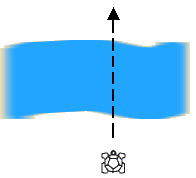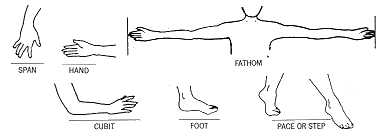
|
Feedback Form

ROAMER, TURTLE AND MEASUREMENT 1
 The
UK National Curriculum states "Pupils should estimate and measure quantities,
and appreciate the approximate nature of measurement". Practical measurement
of length, weight, capacity, etc. is a common feature of early mathematics
work. Unfortunately this often becomes the manipulation of standard units
and the use of ready-made measuring devices. This assumes that children
know what measurement is and have grasped the need for standard units.
Such assumptions are unfounded. Understanding grows from practical experience
of measurement over a considerable period of time and in many different
contexts. "GO" looks at how using the Valiant Turtle and Roamer embodies
the basic ideas of measurement.
The
UK National Curriculum states "Pupils should estimate and measure quantities,
and appreciate the approximate nature of measurement". Practical measurement
of length, weight, capacity, etc. is a common feature of early mathematics
work. Unfortunately this often becomes the manipulation of standard units
and the use of ready-made measuring devices. This assumes that children
know what measurement is and have grasped the need for standard units.
Such assumptions are unfounded. Understanding grows from practical experience
of measurement over a considerable period of time and in many different
contexts. "GO" looks at how using the Valiant Turtle and Roamer embodies
the basic ideas of measurement.
The key ideas in measurement are:
• Measurement is a comparison of one thing with another.
• Measurement is an approximate affair. All measurements are inherently inexact.
• Units are arbitrary. No particular magic resides in units like centimetres, kilograms or litres. These are adult conventions.
• The approximate nature of measurement implies an 'error' - not a mistake but an unknown difference between what is intended and what is obtained.
• Estimation before and after measuring is a vital part of learning and practicing measurement skills.
 |
Mark Out the banks of an imaginary river and use a Roamer or Turtle to measure its width to enable a bridge to be built. For this the pupils only need to know how to use the Forward command. |
Using the Turtle or the Roamer in, for example, the simple 'river' measuring activity, confronts children with all these key issues.
• In the river activity children have to decide what is being measured. Measurement always has a practical context. This affects precisely what is measured. In this case the bridge needs to start and finish on 'dry' land so the measurement required is not 'river edge' to 'river edge'.
• What units should be used? Children without experience of standard units will create units meaningful to themselves; Turtle and Roamer units are very common conventions adopted by young pupils.
• Programming the robot to cross the river involves estimating distance and, if necessary, revising the estimate by 'trial and error'. Most people asked to estimate the height of a room will think of it in multiples of their own body height. It takes time and many different practical activities for children to develop their own 'yardsticks' for estimating. The Roamer default unit of distance, one 'body length', offers a natural yardstick.

• What is the width of the river? There are many answers to this problem. What is an acceptable answer is a matter of judgement involving practical issues. The issues of 'error', accuracy and tolerance are inherent to this judgement.
 Most none metric units reveal the importance of units meaningful in a personal way. |
| Back |
|---|